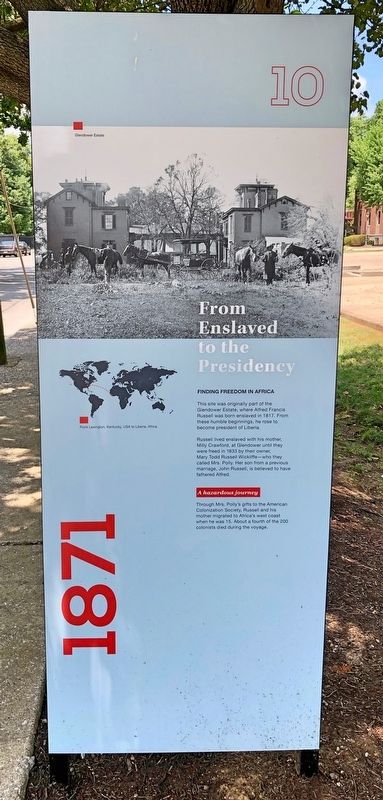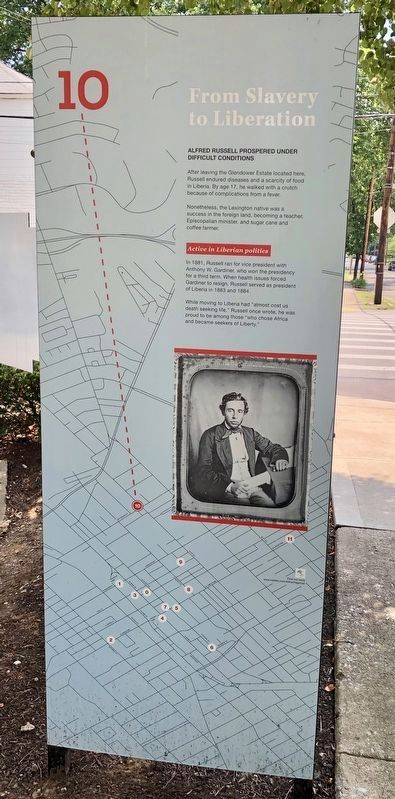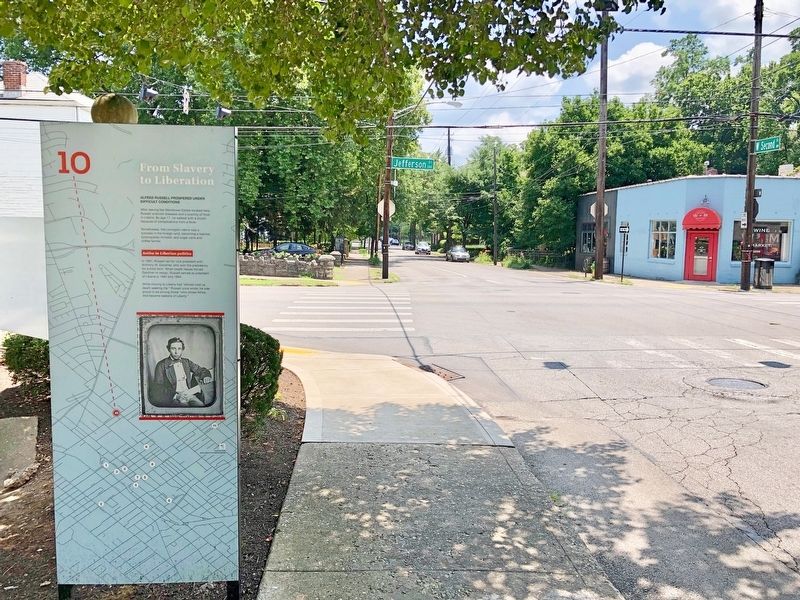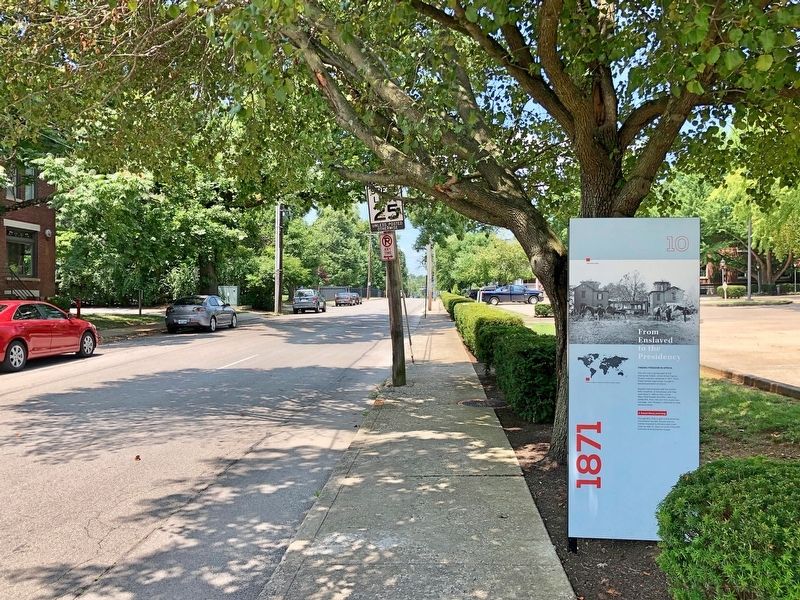From Enslaved to the Presidency / From Slavery to Liberation
1871
— Downtown African-American Heritage Trail —
Finding Freedom in Africa
This site was originally part of the Glendower Estate, where Alfred Francis Russell was born enslaved in 1817. From these humble beginnings, he rose to become president of Liberia.
Russell lived enslaved with his mother, Milly Crawford, at Glendower until they were freed in 1833 by their owner, Mary Todd Russell Wickliffe—who they called Mrs. Polly. Her son from a previous marriage, John Russell, is believed to have fathered Alfred.
A hazardous journey
Through Mrs. Polly's gifts to the American Colonization Society, Russell and his mother migrated to Africa's west coast when he was 15. About a fourth of the 200 colonists died during the voyage.
Alfred Russell Prospered Under Difficult Conditions
After leaving the Glendower Estate located here, Russell endured diseases and a scarcity of food in Liberia. By age 17, he walked with a crutch because of complications from a fever.
Nonetheless, the Lexington native was a success in the foreign land, becoming a teacher, Episcopalian minister, and sugar cane and coffee farmer.
Active in Liberian politics
In 1881, Russell
While moving to Liberia had "almost cost us death seeking life," Russell once wrote, he was proud to be among those "who chose Africa and became seekers of Liberty."
Erected 2018 by Together Lexington. (Marker Number 10.)
Topics. This historical marker is listed in these topic lists: African Americans • Agriculture • Churches & Religion • Industry & Commerce • Settlements & Settlers. A significant historical year for this entry is 1817.
Location. 38° 3.228′ N, 84° 30.031′ W. Marker is in Lexington, Kentucky, in Fayette County. It is in the Northside District. Marker is at the intersection of West Second Street and Jefferson Street, on the right when traveling west on West Second Street. Touch for map. Marker is at or near this postal address: 191 Jefferson Street, Lexington KY 40508, United States of America. Touch for directions.
Other nearby markers. At least 8 other markers are within walking distance of this marker. Thomas Satterwhite Noble (approx. 0.2 miles away); Breckinridge's Last Home (approx. 0.2 miles away); Hampton Court (approx. 0.2 miles away); Mary Todd Lincoln House (approx. 0.2 miles away); Vertner Woodson Tandy
Regarding From Enslaved to the Presidency / From Slavery to Liberation.
Jim Crow (1865-1950s)
Legal and financial networks during this time refused to serve or protect African-Americans. They were spatially segregated in housing options, transportation systems, and public spaces, and deprived of quality education, healthcare, and employment.
Those who challenged these systems were met with violence, but threats did not prevent resistance. Many did not accept these practices and used activities in their daily lives to shape their own identities. Lexington was home to a range of vocal activists, philanthropists, and successful entrepreneurs that did not let oppression define them.
Credits. This page was last revised on February 12, 2023. It was originally submitted on July 29, 2019, by Mark Hilton of Montgomery, Alabama. This page has been viewed 203 times since then and 19 times this year. Photos: 1, 2, 3, 4. submitted on July 29, 2019, by Mark Hilton of Montgomery, Alabama.



